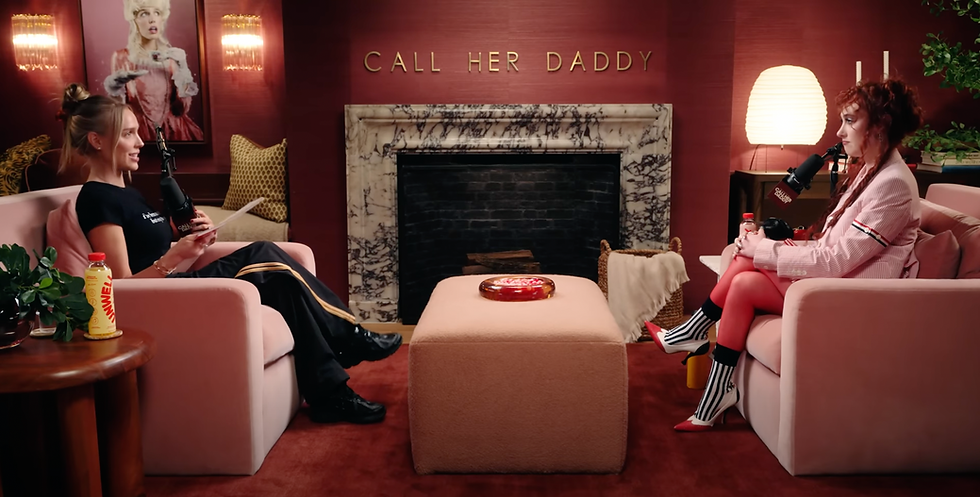If No One Gets the Joke, Is It Still Satire? Sabrina Carpenter, Sydney Sweeney, and the Politics of Who’s Allowed to Be Funny
- Lordslove Ngonge

- Jun 16
- 3 min read
Satire has long been hailed as a tool for critiquing power, exposing hypocrisy, and cleverly reflecting society’s absurdities about itself. But in a digital age where irony, meme culture, and marketing collapse into each other, the line between satire and self-indulgence is thinner than ever.

Sabrina Carpenter’s upcoming album Man’s Best Friend features cover art of her on all fours, hair tugged by a faceless man in a suit. The Guardian calls it “either high-camp empowerment or empty provocation,” depending on who you ask. Meanwhile, Sydney Sweeney’s bathwater-infused men’s soap line—riffing off her hypersexualized role in Anyone But You—has sparked both laughs and backlash, with some calling it genius, others calling it gross. But what makes these satirical? Is it the intention, or who’s allowed to make the joke?
What Gives Satire Its Value? The Idea or Its Reception?
Historically, satire is a literary and artistic mode that exposes folly and social flaws through humor, irony, exaggeration, or ridicule. Its power lies in both the cleverness of its concept and the social impact it generates through audience understanding. Classic examples like Jonathan Swift’s A Modest Proposal use grotesque exaggeration to critique British colonialism in Ireland, requiring readers to grasp the irony for the satire to land. Philosopher Mikhail Bakhtin emphasized satire’s dialogic nature in The Dialogic Imagination, meaning it relies on interaction between the creator and the audience to generate meaning. Without audience comprehension, satire risks misinterpretation or even reinforcing the very views it aims to critique.
In short, satire only truly functions as such when its ironic or critical intent is perceived by its audience. If no one “gets the joke,” it becomes something else: confusion, offense, or mere provocation.

When Does Calling Something “Satire” Become a Lazy Excuse?
In contemporary culture, “satire” can sometimes be a shield that creators wield to dodge accountability. This “lazy satire” appears when offensive or poorly executed content hides behind irony, masking harmful messages as edgy jokes. Viral memes or comedy relying on stereotypes but lacking clever framing often claim the label of satire without earning it.
Critics like Linda Hutcheon argue that real satire demands intentionality, awareness, and skill. Without these, calling something satire is a convenient excuse that erodes satire’s potential as a force for social critique and change.
Sabrina Carpenter’s Album Cover: Satire or Missed Message?
Applying these standards to Carpenter’s album cover reveals important tensions. While some fans and critics view her provocative imagery and lyrics as feminist performance art challenging patriarchal norms, many either miss the irony or outright reject it. This disconnect weakens the satirical impact, potentially causing confusion or backlash.
If the majority don’t perceive the satirical intent, can it truly be satire? Or does it become ambiguous imagery subject to misinterpretation?
The Double Standard: Sydney Sweeney vs. Sabrina Carpenter
Contrast Carpenter’s reception with Sydney Sweeney’s soap line, which faced more intense criticism. Sweeney’s project, though arguably similar in intent, using provocative humor to critique celebrity culture and sexualization, was met with mixed reactions, with some dismissing it as gimmicky or gross.
This contrast exposes a key issue: satire’s acceptance often depends not just on content but on who creates it and the audience’s prior sympathies. Carpenter’s fanbase often labels her an “I hate men feminist” and a “girls’ girl,” granting her ideological loyalty and making her moves easier to frame as intentional feminist satire, despite some regressive undertones.
Sweeney, perceived by some as “male-centered,” faces a harsher lens, resulting in less charitable interpretations of her work. This suggests that the legitimacy of satire can hinge on identity, fandom, and power dynamics.
Is Satire Only Satire When It’s Your Fave?
This pattern reflects a broader cultural phenomenon where satire is “allowed” only when it aligns with an audience’s sympathies or fandom. When it doesn’t, the “satire” label is withheld, and works are judged more harshly, sometimes ignoring context or nuance. Such selective reception undermines satire’s democratic potential as a tool for critique across social divides.
It also raises tough questions about fan loyalty shaping cultural discourse: who gets to be called a “satirist” and who is dismissed as an “offensive provocateur”?
The cases of Sabrina Carpenter and Sydney Sweeney reveal how satire’s value and legitimacy are deeply entangled with identity, fandom, and power. Satire requires both clever intent and audience recognition to be effective. Yet, the cultural gatekeeping around who can claim satire and when it’s “allowed” reflects larger social biases.
Ultimately, these examples challenge us to examine whether we engage critically with content or merely reinforce our biases by selectively praising or condemning works based on who made them, not just what they say.








Comments